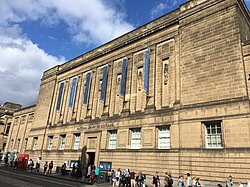Electoral registers have been compiled annually in Scotland since 1832 after the implementation of the Great Reform Act. Prior to this date, there were only a very small number of Scottish people who were eligible to vote, around 0.2% of the population, and all were male. Over time the electorate has grown to include women and people of different financial backgrounds. Electoral registers, also known as electoral rolls, are especially useful for tracing people who moved house frequently. You may also discover more recent ancestors and living relatives as electoral registers are not subject to the same privacy laws as other documentation.
Research your ancestors on MyHeritage
Voting records in Scotland prior to 1832Voting records in Scotland prior to 1832
Poll books in Scotland are a rare find. They were not regularly produced as many Scottish MPs were elected unopposed. Where they do exist they only name a tiny fraction of the wealthiest members of the Scottish population. The information found within poll books includes:
- The names of those able to vote (adult males only who met a certain property qualification)
- Their qualification to vote
- The name of the candidate for whom they voted (secret ballots were not introduced until 1872)
- The voter's district and occupation
Scottish poll books can be found at local archives, local libraries and the British Library.
Electoral RegistersElectoral Registers
Electoral registers have been published annually in Scotland since 1832. For a person to be eligible to vote they had to 'qualify' by meeting certain criteria, such as property ownership of a certain value. These qualifications are given in each register up until 1948 along with a code, such as 'R' if they were able to vote due to their residence or 'J' if they were a juror. The information provided in each register varies depending on the date but can include:
- A person's name with suffixes (sometimes also with middle names)
- Their home address or district
- Their occupation
- Their parliamentary constituency
- The reason for their qualification (e.g. proprietor, tenant, etc.)
- The description or address of their qualifying property (may be the same as their home residence or a work address)
From 1948 the information provided in electoral registers was streamlined, meaning some details such as a person's occupation, was no longer included.
No electoral rolls were taken in the war years of 1917–1918 and 1940–1944. No relationships are given between voters. You will be able to see what adults live at each address but from this source alone you cannot tell how or if they are related. People may also appear in the register published the year after their death.
Where to find Scottish electoral registersWhere to find Scottish electoral registers

You can find Scottish electoral registers at the National Library of Scotland, the British Library, county archives and local libraries. It is recommended that you check the catalogue of each site prior to visiting to ensure that they have the registers you wish to see.
Eligibility to VoteEligibility to Vote
The qualifications to vote largely followed England and Wales after 1832. Before this date, only males who held a feudal 'superiority' (right to land) valued at at least 40 shillings, could vote which excluded a vast majority of the population. The Great Reform Act of 1832 enabled male householders to vote if they paid a given amount in annual rent. With the Reform Act of 1884, around two thirds of the male population were given the right to vote.
The Representation of the People Act of 1918 granted the vote to all men aged 21 and over and women over 30, so long as they met certain property qualifications. This Act was updated in 1928, giving equal voting rights to women by removing the property qualification and lowering the voting age to 21. The voting age was lowered for men and women to 18 in 1969.
Valuation RollsValuation Rolls

Valuation rolls were established in Scotland in 1855 and are frequently used alongside, or as a substitute to, electoral registers. They were also compiled annually. The information contained within valuation rolls includes:
- Names of property owners
- Names of property occupiers and tenants
- Often the occupation of the owner and occupier in earlier rolls
- Type of property e.g. house, shop, hotel, etc.
- Annual rateable value
From 1989 the rolls only contain information about business-based properties rather than domestic households. Valuation rolls are held at National Library of Scotland and the National Records of Scotland. Some are also held by local archives.
See alsoSee also
Explore more about Electoral Registers in ScotlandExplore more about Electoral Registers in Scotland
- United Kingdom - Census & Voter Lists record collection at MyHeritage
- Guide to using our voters rolls at National Library of Scotland
- Electoral Registers at Genguide
References

